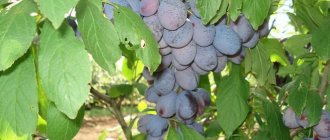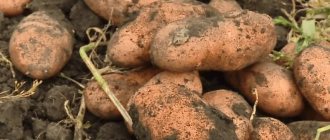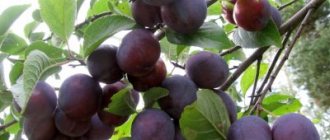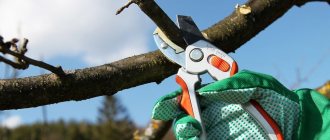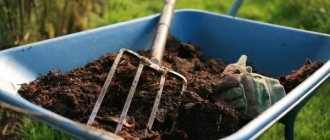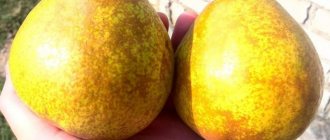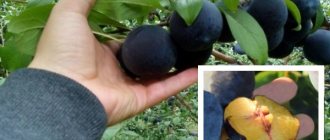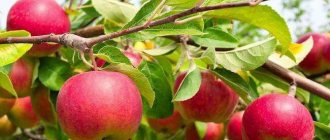Over many years of cultivating plum trees, a huge variety of varieties have been created that differ in all sorts of parameters (in particular, the color of the plums themselves). Morning belongs to Yellow plums and is distinguished by the sunny color of the fruit. This culture has long been known to gardeners and is already considered a classic. It is characterized by stable yield and high taste of drupes.
History of the variety's creation
Plum is one of the most common fruit crops, which can often be found in both home and industrial gardens. Perhaps that is why the hybridization of this plant is receiving a lot of attention in various research institutes.
Description of the morning plum dates back to the late 80s of the last century. The variety was developed at the Institute of Horticulture of the State Scientific Institution VSTISP, located in Moscow. Famous breeders Kh. K. Enikeev, S. N. Satarova and V. S. Simonov worked on its breeding. In the process of creating a new variety of domestic plum, Skorospelka Krasnaya and Renclaude Ullens were crossed.
The result is a variety that is characterized by average winter hardiness and self-fertility. It was entered into the State Register in 1986 and zoned in the Central region (Moscow, Tula, Kaluga and other regions).
Uses of plum fruit
Plums are consumed fresh, dried, dried, pickled, processed into preserves, jams, marshmallows, juices, compotes, and sauces.
The healthiest option is to consume the fruits fresh and in the form of prunes. Any varieties are suitable for fresh consumption, but the best for drying are “Hungarian”, “Azhanskaya”, “Ugorka”, “Berton” and some others. Before drying, the fruits are blanched (immersed in boiling water for 1-2 minutes), then dried under the sun or in a dryer. Store in fabric bags.
It has been established that prunes have high antibacterial properties, which helps to improve the health of the oral cavity and intestines. Being a source of potassium, it strengthens the nervous system and restores the circulatory system, maintaining the water-salt balance of the body.
Characterized by a high content of antioxidants (prunes have more antioxidants than raisins, figs, dates), it increases the body's protective functions. Prunes are also used externally - in the form of applications on calluses.
The healthiest option is to consume the fruits fresh and in the form of prunes. Mental Floss
Main characteristics
Plum Morning is a medium-sized tree, 3-4 m high. It has a spherical, not too thick crown. The shoots are straight, thick, with smooth dark brown bark.
The foliage of the crown is not too abundant. The leaves have the standard size, color and shape for plum trees. But their thickness is comparatively greater than ordinary leaves. They have no edges, and the surface is wrinkled.
Flowering begins in the first ten days of May. Its duration is up to two weeks depending on weather conditions. The flowers are large and white. Appear on bouquet branches and spurs. The petals are not connected to each other.
Colored buds tolerate spring frosts well. Therefore, even if the air temperature drops below zero, they will be able to survive. This property explains the stable yield.
The culture is characterized by average winter hardiness. It is not recommended to be planted in northern latitudes. There is a high probability that if there is significant frost, its branches and roots will be severely damaged and will not recover. Drought resistance is also average, so during cultivation it is necessary to monitor the level of soil moisture.
Pollinator varieties for plum Morning
The Utro plum variety is self-fertile, so for its pollination it is not necessary to plant other plum varieties with the same flowering time next to each other for cross-pollination.
Plum Morning - video
The plum tree begins to bloom in the morning in the second decade of May, like most other varieties of this stone fruit crop. Plums begin to ripen in the first ten days of August, but the fruits ripen unevenly.
Important!
Plum Morning is an excellent pollinator; planting it next to other self-fertile varieties can significantly increase their yield.
Description of fruits
Plums ripen in late July - mid-August. They have an oval shape and an average weight of 25-30 g. They may not ripen at the same time, so the harvesting process is extended over time. The color is yellow with a green tint and a slight blush on the side facing the sun. The fruits have a thin waxy coating that is easily erased.
The pulp is also yellow, juicy, and slightly fibrous. The taste of drupes is sweet and sour with a slight pleasant aroma. The sugar content is 8.2%, and free acids – 2.2%. Fruits are rich in vitamin C and other beneficial substances, so they are recommended to be consumed fresh.
According to the description of professional tasters, the taste of the fruit is rated 4 out of 5.
Severing the drupe from the stalk is dry. The skin is thin, almost invisible during eating. At the same time, transportability is quite high. Fruits can be transported over long distances without significant losses.
The variety can be used for various purposes. Plums are eaten in their natural form, frozen for the winter, and prepared into preserves, jams and compotes. They make juice, and some craftsmen also make alcoholic drinks.
Description of the tree and fruits
Description of the tree and fruit of the plum Morning:
- Tree. Medium height with a spherical, slightly raised crown. The average height is 3-3.5 m. The foliage and crown density are average. The leaves are round-oval, with jagged edges.
- Fruit. Oval, medium and large, weighing from 20 to 40 g. The main color is greenish-yellow. Fruits on which the sun falls have a pink outer color - “blush”. The skin is smooth, without pubescence, with a waxy coating. The yellow pulp has a pleasant, sweet and sour taste. Tasting score – 4 points out of 5. The stalk is of medium length, torn off from the fruit dry.
The sugar content in the “Morning” plum fruit is 8%, which is almost half that of the sweetest varieties, for example, Hungarian plums.
Productivity
Fruiting begins from the 5-6th year after planting in the ground. Productivity ranges from 15 to 20 kg per season, depending on the age of the plum and weather conditions. Fruiting is stable, but a rest period is noted once every 4 years. At this time, drupes appear on the branches, but there are not very many of them.
The lifespan of a tree is about 20 years. After this age, it stops producing crops.
Features and qualities
The Morning variety is an early ripening variety - the tree blooms in mid-May, and the first plums ripen by the beginning of August. This is a fast-bearing plum; its fruits ripen already in the 4-5th year after planting the seedling. The tree has a short lifespan - about 20 years.
One of the important features of the variety is the difficulty in identifying ripe fruits. When plums ripen, they hardly change color; you have to determine ripeness by touch.
Resistance to diseases and pests
The variety is resistant to most diseases affecting stone fruits - clasterosporia, fruit rot, moniliosis. The incidence of aphids and codling moths is high, while that of other pests is average.
Productivity
The Morning variety produces 15-30 kg of plums annually. Once every 4 years, the morning plum takes a short break from fruiting - there are fruits on the tree, but there are not many of them.
Like many plums, Utra's fruits ripen unevenly. This is especially convenient for amateur cultivation - fruit harvesting lasts almost a month. Garden owners have the opportunity to feast on plums for a long time, and make preparations gradually, as the fruits ripen.
Frost resistance
The variety is not frost-resistant. Even moderate frosts can cause damage to a tree - its shoots often freeze in the winter. But this minus is compensated by the rapid recovery of the culture. The tree tolerates spring frosts well - flower buds practically do not suffer from them.
The growing area of the variety is limited to the regions of the Central region - Moscow, Kaluga, Tula, etc. In more northern regions, in Siberia, in the Urals, this variety is not recommended to be grown - it lacks frost resistance.
Drought resistance
The variety cannot be called particularly resistant to drought; it is at an average level. The tree needs regular watering; without timely moistening, the yield decreases - some of the fruits may fall prematurely.
Pollination
The variety is self-fertile - this is one of its main advantages. For a tree to bear fruit, additional pollinating varieties are not needed. At the same time, the “Morning” plum itself is often used to increase the yield of other varieties.
Diseases and pests
The Morning variety has average immunity. It may be susceptible to the development of common plum diseases such as clasterosporiosis, fruit rot, rust, plum pockets and moniliosis. To prevent the appearance of diseases in early spring, it is recommended to spray with 3% Bordeaux mixture. This is a universal remedy that helps in the fight against various fungal diseases.
Resistance to attacks by parasites is 3 points. Most often, fruits and leaves are affected by sawflies, codling moths, plum aphids and weevils. For prevention and in case of attack by these pests, insecticides are used. You can also use folk remedies that show good results more as preventive methods.
Among the most effective and safe folk methods is attracting predatory insects to the garden - natural enemies of pests. These include ladybugs, hoverflies, ichneumon flies, etc. Beneficial insects are attracted to flowering plants, in particular, the umbellate family - dill, caraway, fennel, lovage, etc.
Further care
In the first year of growing a seedling, no pruning is usually done. Starting from the second year, it is necessary to carry out the formation of the crown
Particularly important is sanitary tree pruning, which is carried out to remove dried, severely damaged shoots, as well as branches with signs of serious disease.
It is recommended to save the furrow that was dug around the seedling during planting for irrigation for the future. Subsequently, each watering must be carried out directly into this recess. After each irrigation, it is recommended to loosen the soil to facilitate access of moisture and oxygen to the roots and at the same time get rid of weeds. Subsequent mulching is also mandatory, for which, in addition to the soil mixture, it is allowed to use peat or straw manure.
According to the description of the Ussuri plum, it does not tolerate the lack of moisture, as a result of which watering should be regular and carried out at least once every 1.5-2 weeks. About 10 liters of water are poured onto each plant.
The species is not resistant to pests and diseases. Typically, Ussuri plum is affected by diseases such as:
- gray rot;
- sooty fungus;
- rust;
- Clusterosporiosis;
- coccomycosis;
- root cancer;
- fruit rot.
The tree can be damaged by the following pests:
To protect the plant, it is customary to use appropriate fungicides and insecticides. The dosage and method of use are usually indicated on the packaging.
Fruiting of the plant most often begins in the 3-4th year of cultivation, and in the growing season it occurs at the end of August - beginning of September. When fully ripe, the fruits usually fall off quickly, so it is recommended to harvest them slightly unripe.
Important! When stored in an insulated room, they will reach the desired condition in 3-5 days and will be ready for use. Growing Ussuri plum is not difficult
With proper care, the harvest will be of high quality and high.
Growing Ussuri plum is not difficult. With proper care, the harvest will be of high quality and high.
https://dachamechty.ru/sliva/ussurijskaya.htmlhttps://fermilon.ru/sad-i-ogorod/derevya/sliva-ussurijskaya.htmlhttps://7ogorod.ru/plodovye-derevya/sliva-ussurijskaa.html
Advantages and disadvantages
Plum Morning has long been known to gardeners. It has many positive reviews and is actively grown by both professionals and beginners. Based on the description of the variety, the following strengths can be identified:
- small tree size with a compact crown;
- self-pollinating;
- high quality fruit;
- stable harvest.
Disadvantages include:
- low frost resistance;
- average immunity levels.
Characteristics of plum
Also check out these articles
- Pietrain pigs
- Orpington chicken breed
- Apricot variety Champion of the North
- California rabbits
The positive and negative qualities of the Utra variety are collected in its characteristics.
- The plum is self-fertile. It doesn't need pollinators.
- Gives the first harvest of plum Morning from 4 years after planting. The approximate development time of these trees is 20-25 years.
- Resistance to frost is average, because of this, in especially cold winters, the tree may freeze and the yield decreases. But spring frosts in the morning plum are not terrible.
- Productivity is stable and high. From each mature tree you can collect about 15 kg of ripe fruits per season. Up to 120 centners are harvested per hectare per year.
From each mature tree you can collect about 15 kg of ripe fruits per season
- The harvest is suitable for long-term transportation.
- Plums are beautiful and have commercial quality. The taste is sweet. The aroma is delicate and pleasant.
Experts consider this variety worthy of cultivation. Of course, it has problems, but any type of plum has disadvantages, so the main thing is just to be able to properly care for the tree.
Landing
To plant plants in the ground, 1-2 year old seedlings with a well-developed root system are used. Planting is best done in early spring (before the buds open), since the crop is not frost-resistant, and the young tree may not survive the winter.
The location must be sunny and protected from cold winds. Plum is not too picky about soil, but grows best in loose, fertile soils. It does not tolerate stagnation of water and prefers soil with a neutral acidity level.
Acidic soil must be treated with dolomite flour or wood ash, which is added during digging.
A step-by-step description of planting a seedling in the ground is as follows:
- The pit is prepared in the fall. It is dug to a depth of 50 cm and a diameter of 70 cm. The top fertile layer is set aside to prepare the soil mixture.
- A thick stick is placed at the bottom, which will become a support for the fragile seedling.
- The pit is filled with a soil mixture, which consists of fertile soil, humus or compost, superphosphate and potassium chloride. When planting in loams and clay soils, river sand is additionally used.
- After the hole is filled, it is covered with a waterproof sheet and left alone until planting.
- Directly during the planting process, the hole is dug approximately in the middle and a mound is formed at the bottom. A seedling is placed on it on the north side of the support stick.
- The roots are straightened in different directions and dug in, carefully compacting the soil. In this case, the root collar should be 3-5 cm above ground level.
- The seedling is watered with 3-4 buckets of water. Water is added in portions so as not to turn the tree trunk circle into a swamp.
- The ground is mulched with peat or humus.
After planting, the seedling is not shortened. The first pruning will take place next season.
Planting plum Morning - rules and features
Morning plum with an open root system is planted only in the spring (before the buds open), and those trees that are bought with closed roots can be planted not only in the spring, but also in the autumn - from early September to mid-October. If the seedlings were purchased late in the fall, then they are buried in the garden before the onset of warm weather.
This stone fruit tree feels most comfortable in well-lit, elevated areas, where it will be protected from strong winds and drafts. This plum also does not tolerate stagnant moisture in the soil, and this must be taken into account when choosing a place to plant it. If the above requirements for draining are not met, the Morning will be sick, and its yield will be greatly reduced.
The soil on the site should be as fertile, loose and neutral as possible
. Dolomite flour is added to acidified soils, and peat and river sand are added to alkaline soils.
Important!
It is not recommended to plant plum trees next to other stone fruit or pome crops. Usually, plantings of fruit trees are divided into shrubs - currants, raspberries or gooseberries.
When purchasing Utro plum seedlings, you should pay attention to the condition of the above-ground parts and roots. They should not show any signs of visible damage or the effects of disease or pest damage.
Young trees should be no older than two years - older plums do not take root well, suffer for a long time and may even die.
How to plant a plum
The pit for planting plums in the morning is prepared in advance, its diameter should be about 0.6-0.65 m, and its depth should be no more than 0.7 m.
A layer of drainage 4-6 cm thick is laid on its bottom, then a layer of nutrient substrate composed of 20 kg of humus, 1 cup of potassium sulfate, 2 cups of superphosphate and 3 cups of wood ash.
A peg is dug in near the center of the hole, then a tree is placed vertically in the center. Its roots are carefully straightened, the trunk is tied to a peg and the hole is filled with the rest of the nutrient substrate. The soil is compacted. The root neck of the tree should be 5-7 cm above ground level.
Then a near-trunk circle is formed, along the edge of which a side is created. 10-15 liters of water are poured under each plum tree.
Care
The Morning variety requires the implementation of standard agrotechnical measures. It is important to carry them out regularly so that the young plant takes root well and produces a bountiful harvest in the future.
Watering
This crop is moisture-loving, so it needs intensive watering. The soil must be moistened 40 cm deep. To do this, you can use a drip irrigation system, or add water into the trench of the tree trunk in portions.
A young tree requires 3-4 buckets of water every week. After it grows more than 2 m, the amount of water is increased to 5-6 buckets. During the rainy season, watering is reduced so as not to over-moisten the soil.
After each watering, weeds should be removed, the soil around the tree trunk should be loosened and mulched. Mulch will retain moisture for a longer period.
In the fall, the plum tree needs recharging watering before wintering. About 100 liters of water are used for it.
Trimming
The Morning plum is pruned from the second year after transplanting into the ground. Pruning is done in early spring before sap flow begins. In the first 2-3 years of a young tree, the crown is formed, for which a few of the best skeletal branches are left, which are cut off by a third. The rest are deleted. Additionally, damaged and frostbitten shoots are cut off. And also those that grow inside the crown and compete with skeletal branches.
No more than a quarter of the branches from the entire crown should be pruned.
In addition, in the summer, root shoots are regularly removed. To do this, you need to carefully dig up the ground and cut out the shoots directly at the root.
You cannot break off branches, as the plant does not tolerate such a procedure very well. For pruning, you must use well-sharpened garden tools.
Top dressing
There is no need to apply fertilizer in the first two years. In the future, several feedings will need to be carried out during the season:
- in early spring and after flowering - potassium sulfate + nitrogen fertilizers;
- during the ripening of drupes - nitrogen-phosphorus-potassium fertilizer (nitrophoska);
- after harvest - superphosphate;
- in the fall - phosphorus-potassium fertilizing and once every 3 years organic matter for digging.
Wintering
According to the description, the Morning plum is not highly winter-hardy, so it must be well covered. The young plant is insulated with burlap or agrofibre. And in an adult they protect the standard. In any case, in the fall it is necessary to mulch the tree trunk circle with organic matter, peat or other mulch with a layer of 10-15 cm.
An excellent covering material is spruce branches, which will not only protect the tree from freezing, but also protect it from rodents.
Caring for a planted tree
If the tree is planted in the fall, then all agrotechnical measures are postponed until spring. Seedlings planted in spring need immediate care.
Features of caring for a planted tree:
- Watering. Compared to mature trees, seedlings need increased moisture. Watering frequency is weekly. Heavy rains can make adjustments to the watering schedule. Water the seedlings with non-cold water - it must be heated in the sun. When watering, it is important to maintain a balance - the soil should not dry out, but water should not stagnate.
- Trimming. If the seedling is planted in the spring, its top is cut off. In spring and autumn, pruning is carried out to form the crown.
- Feeding. If planting is done with the application of fertilizers, then the tree does not need to be fed for the first two years.
- Preparing for winter. The seedling is covered with spruce branches, the trunk circle is mulched with a thick layer of humus or compost. Wrap with fine mesh metal mesh to keep rodents away.
The first flowers that appear on the tree are cut off - this is done to save the plant’s strength. In the first years, all energy should be directed to growth and expansion, and not to fruit formation.
Reviews
Igor Seleznev, Moscow region: I planted Morning on my plot 8 years ago, and have never regretted it. It blooms beautifully and brings a good harvest. Fruits annually and abundantly. The fruits are sweet and juicy. Tolerates winter well.
Anzhelika Karlovna, Vladimir: There are several plums growing on the site. Morning is a pollinator for them. My review of this variety is positive. The seedling has taken root well, is easy to care for and does not get sick.
Ekaterina Kuznetsova, Kolomna: I planted a seedling Morning in the spring, but in winter it still froze a little. Although it was covered. Doesn't recover too quickly. You may have to remove it completely.
Reviews from gardeners about the Morning plum variety
Plum morning is known to many gardeners. But everyone has their own opinion about her.
- Svyatoslav Merkushin : “The Morning plum variety is one of the best for me. I grow it for food, canning, and in especially fruitful years, I sell some of the fruits. I like it for its simple, sweet taste, good aroma, and consistency of pulp. During cooking, ripe fruits always become soft, so if you need to get jam in pieces, you should pick it unripe. Growing is simple, there are no special problems.”
- Victoria Sidorova : “The Utro plum was already growing at the dacha when we bought it. I immediately liked it, since the plot was bought in late summer, and therefore I was able to taste several of the fruits. I was pleasantly surprised by the taste, and the smell of the fruit was pleasant. But over time, I began to notice shortcomings. For example, it is better to insulate it for the winter, since the branches have already frozen several times. And the harvest does not ripen simultaneously, but in parts. So the collection stretches over a long period.”
- Nadezhda Zhuravleva : “I love yellow plums, they are always preferable for me. But it was not possible to grow the Morning variety. The main thing I don’t like about it is that it is difficult to distinguish ripened fruits from unripe ones. And it does not always withstand frosts in winter and spring. So in the past, it often froze, and because of this, the yield was greatly reduced. Therefore, we decided to replace it with more profitable varieties.”
Growing
Proper tree care allows you to consistently obtain good yields. Knowledge of the intricacies of agricultural technology for each varietal variety greatly facilitates the process of growing and caring for a tree.
Planting in the soil
When planting a plum tree, the right location is of great importance. Only in a suitable area will the tree grow strong and suffer less from disease.
The area for planting the Morning plum variety should be well lit. It is also worth taking care that the root system of the plant is not flooded by groundwater. If the area is excessively damp, it is necessary to compact it by 60 cm and provide additional drainage. With excess moisture, trees grow sickly and produce few fruits, the quality of which is far from ideal.
It is allowed to plant a seedling near a low building or fence. It is best to place the young tree on the south side.
Container seedlings are planted on the site in the fall. A plant with bare roots is planted only in spring. If the seedling was purchased in the fall, then it is dug in and planted in its place of growth in the spring. Spring seedlings need to prune their branches. The root system cannot be touched. The roots must be intact and well developed.
After covering the seedling with soil, you should water the soil generously
The landing algorithm looks like this:
- A hole with dimensions of 60x70x60 cm is dug.
- A fertile soil mixture is prepared. To do this, add 2 buckets of humus, 100 g of potassium sulfide, 200 g of superphosphate and 300 g of wood ash to the soil.
- The seedling is placed in a hole and covered with soil mixture.
- The planting site needs to be trampled and watered.
When planting, it is very important not to place the root collar of the seedling too deep. It should be 7 cm below the soil
The seedling is placed at a distance of at least 3 m from possible barriers to growth.
Care
A well-maintained tree will always produce a high-quality, abundant harvest.
Therefore, compliance with the norms and subtleties of agricultural technology is extremely important when growing any fruit and berry crop.
Top dressing
The tree is fed for the first time 2 years after planting on the site. Mineral and nitrogen-phosphorus fertilizers are used as fertilizers.
Before the flowering period begins, the soil is enriched with urea and potassium sulfate in the amount of 40 g of each fertilizer. During fruit ripening, 30 g of substances such as nitrophoska and urea are added. After the crop is harvested, 30 g of potassium sulfate and superphosphate are added to the soil. Before wintering, the plant is fertilized with organic fertilizers.
Watering and mulching
The plum tree must be watered at least 4 times a month. This procedure must be performed using heated water.
Watering at the beginning and middle of the summer season is important because watering at this time has a strong influence on the correct formation of the tree's fruits.
In case of drought, about 100 liters of water are poured under the tree before wintering begins. After each watering, the soil around the tree must be loosened, mulched and cleared of weeds.
Trimming
Trimming a tree's crown is no less important than watering or protecting it from the effects of cold. Maintaining the correct crown shape contributes to good tree health and abundant, high-quality harvests
The tree should be pruned either in mid-April or late autumn. This will have a positive impact on the quality of the crop and the health level of the plant.
On a 2-year-old seedling, the branches need to be pruned to the level of one year old. In case of cutting onto the ring, it is not recommended to leave hemp. Also remove those branches that descend to the ground. Every year you need to thin out the branches and shoots. Weak and crooked shoots must be removed. However, it is worth remembering that no more than 25% of the entire crown is cut off.
Added after harvest
When the tree reaches a height of 2.5 m, it is worth stopping its further upward growth. The crown should be well lit and spreading. Branches that point upward should not interfere with those branches that grow sideways.
It is also worth removing the first color of the tree. This will improve the growth of the tree. When the ovary forms, the fruits need to be thinned out. This will improve the quality of the fruit.
General information about the variety
This variety was bred by three gardeners, scientists Kh. K. Enikeev, V. S. Simonov and S. N. Satarova. They crossed the Renclad Ullens variety with the Red early ripening variety. The Morning plum tree lives for about 21 years. It produces its first harvest four years after planting.
The height of the tree reaches an average of 3.5 meters. The fruits are yellow-green in color, and on the side exposed to sunlight, the fruit has a slightly pinkish tint.
This variety blooms from mid to late May. The fruits are ready for harvest in the tenth of August. The Morning plum can be described as a juicy, moderately sweet fruit. It is recommended to grow this variety in the central part of Russia.
Resistance to diseases and pests
The Morning variety is, in principle, considered quite resistant to various diseases and pests, but there are also weaknesses:
- Scab is a fungal disease that causes deformation of leaves and spoilage of plum fruits. To prevent such a disease, it is enough to spray the trees with one percent Bordeaux mixture. If the disease is already present, treatment should be done after harvesting.
- Another type of fungus is moniliosis or fruit rot. It is enough to remove garbage in time, collect spoiled fruits from the tree and around it and feed the soil in time with fertilizers containing potassium and phosphorus, and this disease will never bother you. If this fungus is present, the plant must be treated during flowering.
- Are there orange spots on the leaves that are starting to grow and become more red? This is another type of fungal infection - red spot. For prevention, spray with a solution of copper sulfate (1%). Various solutions are used to treat the plant after plum blossoms.
- The plum mite is capable of destroying more than half of the crop. The tree begins to wither and eventually dies. The only measure to protect the plum is to plant it away from almonds, peaches and other fruits, which are also affected by this mite.
- Plum sawfly. To prevent the appearance of such a pest, you should dig up the ground under the trunk in the fall, and in the spring, before flowering, treat with special preparations.
Productivity
The yield of this variety ranges from fifteen to thirty kilograms per tree. A decrease in volumes occurs only once every four years, because at such an interval the plum rests. The first harvest after planting is usually obtained from the fourth to sixth year of life. On the 21st year from the moment of planting, the plum tree stops producing fruit.
Frost resistance
The main disadvantage is its high sensitivity to winter frosts; the plum suffers greatly from this, so it is not grown in places where winter conditions are harsh.
But it is worth noting that the Morning plum variety recovers quite quickly. When cold weather sets in in spring, the plum tree does not suffer from this.
Drought resistance
Watering should be done regularly, otherwise the fruits will fall ahead of schedule due to lack of moisture, and therefore the yield will decrease.
Pollination
Morning is a completely self-fertile variety. No additional pollinators are needed. Interestingly, such a plum perfectly increases the yield of neighboring trees, thereby being a pollinator itself.
Subtleties of growing a tree
It is important to follow all recommendations for planting crops.
Timing and choice of landing site
In terms of disembarkation times, everything is simple:
- It is recommended to plant a seedling with a closed root system in the spring or in the first two months of the autumn season.
- In the case when the roots are open, planting should be done in the spring, before the buds open.
When choosing a location, you should pay attention to the soil. It should be quite loose, and not hard like a rock.
The location should be:
- not shady, but well accessible to sunlight;
- windless;
- on a flat surface so that moisture does not accumulate in large quantities.
When the conditions are right, the harvest will be rich and large.
Specifics of planting work
When planting the Morning plum, it is important to take into account the specifics of this work: when to do it, where the tree will be most comfortable, how to prepare a suitable place, what types of plants are preferable to plant with, how to form a planting hole. Description of the Bogatyrskaya plum variety, planting and care rules
Description of the Bogatyrskaya plum variety, planting and care rules
Read
Deadlines
Saplings with open roots must be planted in the spring - before the buds open. Seedlings with a closed root system are planted in spring and autumn (September-October). If the plant was purchased later than the possible planting date, it is dug in and replanted in the spring to a previously chosen place on the site.
Layout plans
The Morning variety depends on the availability of good lighting in the area where it is planted. The place where the plum grows should not be in a lowland where water accumulates. If these simple growing requirements are not followed, the plum will produce a poor harvest and develop various diseases. Fertile, loose soil with neutral acidity is also important for the tree.
Site selection
The future fate of the tree will depend on how well the site is chosen.
The place should be protected from wind blowing and not have drafts; it should be planted on the south side, next to a fence or barn (at a distance of no closer than 3 meters). Do not allow the tree to be washed away by groundwater. The minimum limit for their passage should be one and a half meters.
What crops are recommended to be planted with?
You should not grow plum Morning next to pome and stone fruit plants.
The close presence of trees will negatively affect it:
- Sweet cherries do not get along well with plums; their crown shades the plum, negatively affects its yield and slows down its growth.
- Pear grows well next to fruit trees. Plum and pear can suffer from different diseases, but the second one can suppress its neighbor over time. Therefore, it is difficult to grow a healthy fruit plant next to a pear.
- Cherries - this crop could be planted together with plums, since these trees do not affect each other's yield levels. However, plants are susceptible to the same diseases and can easily infect a neighbor, for example, coccomycosis.
It is recommended to plant an apple tree near the plum tree, but only a dwarf one, so that it does not block the access of sunlight to the plum tree. Elderberry is a useful neighbor. It is able to repel aphids, which are the main pest of plums.
Maple will also be a good neighbor. However, you need to monitor the growth of the tree so that it does not grow larger.
Formation of a planting hole
The pit has been prepared since autumn. If it was not possible to do this in advance, you need to make a time interval of 14-21 days between planting the seedling and digging the hole. You need to wait for the soil to settle. The planting hole is dug 60 cm deep and about 60-70 cm in diameter.
Humus (2:1) must be added to the fertile soil extracted when digging a hole (approximately 20 cm of the top layer). Pour the mixture into the hole. Fertile soil should be enriched with fertilizers.
To do this, prepare a mixture consisting of:
- wood ash - 300 g;
- potassium sulphide - 100 g;
- superphosphate - 200 g;
- humus - 2 buckets.
Landing technology
First, prepare a hole, fill it 2/3 with nutritious fertilized soil. Next, the seedling is planted. A wooden support is hammered into the hole and a seedling is placed. Cover the roots evenly with the soil mixture.
The roots of the seedling are carefully covered with earth, tamping the soil with your hands to avoid the appearance of voids. For the same purpose, it is necessary to shake the seedling
The root collar is placed 6 cm above ground level.
The earth around the seedling is also compacted and a depression with sides is made. This way you can water the tree. The seedling is tied to a wooden support using a soft garter (twine) for this purpose. Wire is not suitable for tying. It can cause serious damage to a young plant.
After this, the plum is watered. When all the water has been absorbed, mulch the soil with compost or peat.
The best varieties of Ussuri plum and their description
Among the popular varieties, which are distinguished by their relative ease of care and high yield, it is worth noting.
Covenant
Plum is a medium-ripening plant; the growing season is 60 days from the moment of flowering. It is recommended to grow it in regions with a temperate climate. Varietal characteristics: the tree is medium-sized (4-5 meters), the crown is wide pyramidal, the color of its shoots is burgundy, the color of the wood is brown.
The round purple fruits have a dense layer of waxy coating. The productivity indicators of the variety reach 60 kilograms per planting.
Festive
This variety attracts attention with lush and abundant flowering. The tree has a high degree of frost resistance (up to -40 degrees), yield indicators are almost 20 kilograms (from one planting)
Despite the small size of the fruits, their taste is quite pleasant, harmonious, and the aroma is pronounced. The Prazdnichnaya plum enters the fruiting phase 4-5 years after planting in a permanent place.
Ural prunes
The crown of the plant is large and spreading. The height of the tree is about 2 meters, the yield is high, fruiting is stable. The consumer qualities of the fruit are excellent, tasting score 4.6 points. The weight of black and red plums is 12-16 grams. Winter hardiness is good.
Ussuri late
A distinctive feature of the variety are sweet and juicy fruits with a slight sourness. The harvest takes place in the second half of August. The tree produces fruits abundantly and periodically.
The variety shows high productivity when grown on moist and clay soil; it does not tolerate an acidic environment, in which it gets sick and bears little fruit. Resistance to low temperatures is high.
Ussuri early
The plant is intended for cultivation in regions with cold climates, where the period of low temperatures is quite long. Its crown is spreading, the fruits are small with yellow flesh and a fibrous structure. There is no bitterness in plums.
Vesta
Mid-season Ussuri plum performs well when grown in cold regions. The round, red fruits have a whitish coating visible. The consumer characteristics are high: the pulp is sweet and juicy, the sourness is not noticeable, the aroma is pronounced.
The harvest is carried out at the end of summer. The tree is not afraid of sub-zero temperatures and bears fruit consistently and abundantly.
Golden Niva
The two-meter planting forms a crown in the form of a deep basket. Fruiting occurs every year, the fruits are harvested in August. For pollination, varieties such as Red Ball, Russian Plum, and Skoroplodnaya should be located next to the Golden Niva.
The color of the pulp and skin is yellow, like a nectarine. Plums are distinguished by their juiciness, sweet taste and delicate structure. The bone is easily separated. Reviews about the variety are predominantly positive.
Yolk
The color of the fruit is bright yellow, round in shape, slightly flattened at the top. The taste characteristics of the variety are excellent: the pulp is sweet and juicy, the aroma is pronounced. The plant is endowed with sufficient immunity in relation to major ailments and parasitic individuals.
The variety is actively cultivated in regions with harsh winters, including the Urals. The planting site should be chosen in well-lit clearings, with nutritious soil and neutral acidity.
Ussuri plum is an excellent option for regions with cold climates and frequent temperature changes. Even a novice gardener can grow an abundantly fruiting tree. To obtain good results, it is enough to follow the basic recommendations for planting, care and give preference to frost-resistant varieties.
Plum Morning: description and characteristics of the variety, features of care and cultivation, photo
The unusually colored plum variety Morning has long attracted the attention of summer residents and farmers. Today’s article is devoted to the description of this variety, the intricacies of growing the crop and caring for it.
Description of the morning plum variety
Morning belongs to the varieties of domestic plum, the authorship belongs to a group of breeders from the Moscow All-Russian Institute of Horticulture and Nursery Growing. The plums Reine-Claude d'Oullins (French variety) and the domestic plum Skorospelka red were used as parent varieties. Morning was included in the Russian register of breeding achievements in 2001.
Trees
The tree is characterized by a height of up to 3 m with a ball-shaped crown and strong shoots. Thick branches covered with brown bark are raised upward. The foliage does not grow densely. Dense, oval-shaped leaves are dotted with wrinkles. The foliage color is light green.
Fruits
The fruits are oval-round, their average weight is about 30 g. The dense skin is colored golden yellow and covered with a coating of wax. The sides of the berry facing the sun acquire a slightly pink “blush”. The aromatic, sweet and sour pulp easily comes away from the seed, dividing into two halves. Despite some fibrousness, the pulp is very juicy. The fruits are characterized by a slight sweetness and pleasant aroma
Characteristics of the variety
The Utro plum is self-fertile , which means it does not require cross-pollination and its yield is not affected by weather conditions or the presence of pollinating insects. This is an undoubted advantage of the crop - a gardener can grow one variety in a large array.
We recommend reading about the features and rules for growing yellow plums.
Resistance to diseases and pests
Morning is immune against major crop diseases such as clasterosporiasis and fruit rot. But this fact does not negate the need for preventive treatments. With proper care and prevention, the plum in question is resistant to attacks by codling moths and aphids.
Drought resistance and winter hardiness
The variety is not recommended for cultivation in regions with cold climates. Flower buds do not have strong winter hardiness; if the temperature drops sharply, they can freeze. Plum Morning is moisture-loving - watering should be done regularly, more often during dry periods.
Plum trees require regular watering, especially during dry periods.
Flowering and ripening times
The described plum blooms in May, in the second ten days of the month. The early ripening variety pleases with the first ripe fruits in early August . Maturation is extended and prolonged. The beginning of fruiting falls on 4–6 years of life.
Productivity
According to reviews from gardeners, the first harvests of the variety bring an average of up to 15 kg per tree. The maximum flowering of the plum is from the 8th to the 15th year: then you can collect up to 30 kg from the tree. The productivity of the Morning variety is 21 years.
Important! There are reviews about possible crop failure every fourth year of the tree’s life.
Transportability
The skin of the fruit is quite dense, so during transportation they do not crack and do not lose their presentation. A waxy coating on the peel protects plums from the penetration of harmful bacteria and evaporation of moisture.
Application
The fruits of the Morning variety contain about 8% sugars with acids up to 2.5%. This balance in taste allows the fruits to be used fresh and processed. Juices are pressed from the pulp to produce alcoholic beverages. The berries are used to make delicious preserves and jams, and prepare marshmallows and jelly. Fresh plums are delicious in baked goods as a filling.
Advantages and disadvantages of the variety
As mentioned above, one of the significant advantages of the variety is its self-fertility.
- Other advantages:
- early maturation;
- disease resistance;
- stable harvest;
- excellent taste;
- safety during transportation;
- the ability to quickly recover from illness or other negative manifestations of the external environment;
- versatility of application.
- Flaws:
- low frost resistance;
- Average resistance to insect attacks.
Agrotechnics of cultivation and care
Growing a crop does not present any difficulty for a gardener if the basic rules are followed.
Landing dates
When planting plums, both spring and autumn procedures are practiced, but in the case of the Morning plum, the ideal time for planting is spring .
In the middle zone, the timing of spring planting depends on how warm the soil is and whether there is a threat of return frosts. It is advisable to have time to carry out the procedure before the sap of fruit trees begins to flow.
The landing site must be protected from the wind.
Selecting a site and preparing holes
The described variety is heat-loving - for planting you need to choose a place near a low fence, which will serve as a natural protection from the wind. It is advisable to choose a place slightly elevated so that moisture from precipitation and melt water does not accumulate at the roots. The location of underground sources should be no closer than 2 m to the ground surface.
The place should be open to sunlight most of the day; the proximity of tall fruit trees with a spreading crown is excluded.
Planting holes are prepared in the fall . Their dimensions are approximately 60x70x70 cm. The soil taken out of the hole is mixed with humus, adding ½ part of the volume of soil, and placed back in the hole.
Important! You need to drive a support peg into the center of the hole and tie up the trunk of the seedling. The support is removed after 2-3 years, when the plant gets stronger.
In the spring, a third of the soil is removed from the hole, the seedling is placed, straightening the roots, and covered with the remaining soil so that the root collar remains above the surface. After planting, the soil is compacted to eliminate voids and watered, using about 20 liters of water. Afterwards, the tree trunk circle is covered with mulch (straw, peat, sawdust).
How and when to plant
Planting of seedlings is carried out in early spring. To do this, you need to prepare a hole. Its depth will be 60 cm, and its diameter will be 80 cm. For the Morning plum, you must choose a place carefully illuminated by the sun's rays. Fertilize the soil in the hole with manure. It must be taken in the amount of 15 kg. But not fresh, but rotted. Add 0.5 kg of double superphosphate and 100 g of potassium chloride to the humus.
On the video - how to plant a plum tree correctly:
Place the nutrient mixture in the hole, and then position the seedling itself, carefully straightening its roots. Cover with earth, compact and lay a layer of mulch using peat. But this description will help you understand how to plant a white honey plum correctly.
Description and distinctive features of the Bogatyrskaya plum variety
Plum Bogatyrskaya is a large-fruited variety of domestic selection
Bogatyrskaya belongs to the Plum domestica group. It is the result of hybridization of the Ispolinskaya and Vengerka local varieties. This plum was bred by V. A. Korneev and R. V. Korneev at the Nizhnevolzhsky Research Institute of Agriculture. In 1962, state testing of the variety was carried out. And in 1987, it was included in the State Register and recommended for the Lower Volga region. This plum can also be found under the name Bogatyr.
Characteristic features of the variety:
- A medium-sized tree with a spreading, moderately dense, rounded crown. The trunk and main shoots are covered with flaky gray bark. The branches extend from the trunk at an acute angle. The thickness and length of the shoots is moderate. The buds are cone-shaped and small in size.
- The leaves are corrugated and ovoid in shape. The upper side of the plates is dark green, and the lower side is lighter. The petioles are long and covered with pubescence. The inflorescences consist of two or three small white flowers.
- The fruits ripen on last year's growths, spurs and bouquet branches. Plums are quite large, their weight ranges from 30 to 60 g. They have an elongated oval shape. The skin is quite dense, during ripening it is colored dark purple, and when fully ripe the plum becomes almost black in color.
- The stalks are short, straight, and of small thickness. The mass of the stone is 8% of the size of the plum.
- The pulp is dense, juicy yellow-green in color. The taste is sweet and sour, with a slight taste of honey. The juice has no color.
Important! The Bogatyrskaya variety has good resistance to low temperatures
Harvesting, storage and processing
The Morning variety, distinguished by its compact tree, makes the task of gardeners easier during the harvest period. But you still can’t collect all the fruits without a stepladder. It is not recommended to bend branches when harvesting - they are very fragile and can be easily damaged.
If breaks or cracks form, such branches are subsequently removed, which will negatively affect future harvests. You should also not shake the tree - fallen fruits, especially overripe ones, may burst.
If plums are picked for food or immediate processing, then they are picked when they are ripe. Moreover, the gardener must be careful not to pick unripe fruits. If the plums are to be transported or stored, they are picked before they are ripe. In the refrigerator, such fruits, when gaining ripeness, can remain marketable for up to two weeks. And then they become soft and lose their sweetness.
Reproduction of the variety
Plum Morning propagation is carried out in several ways:
- cuttings growing from the roots. They are dug up at a distance of 1-1.5 m, planted in April under a film, watered, and planted in the garden in the fall;
- shoots growing from the roots. In the fall, part of the root is cut off and planted separately;
- by grafting - shoots for this are purchased at the market or cut from one of the trees growing on the site;
- seeds.
